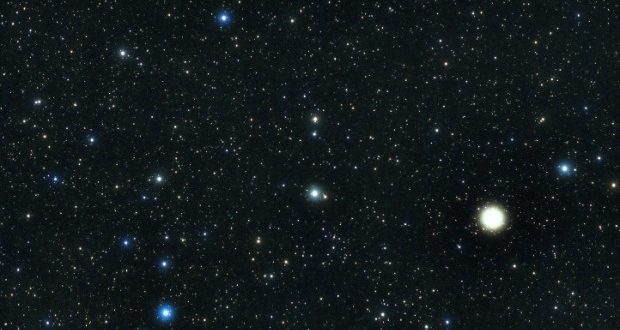Finally, the warm weather is here, and summer is a mere three weeks away. The summer solstice officially arrives at 7:34 p.m. on June 20 this year.
Bright Mars is just above the pinchers of the Scorpion, and Saturn is 7 degrees to the north (left) of bright Antares at the heart of the Scorpion. Saturn is at opposition Friday, June 3, which means it is on the opposite side of the Earth from the sun. It will be at its closest approach to the Earth and visible all night long.
Saturn is famous for its large, bright rings, which are easily visible in a small telescope. At its equator Saturn has a radius nearly 9.5 times that of the Earth, and at opposition Saturn has a mean distance of 1.277 billion kilometers (792 million miles) from the Earth.
Saturn is the sixth planet from the sun after Mercury, Venus, Earth, Mars, and Jupiter, respectively, in that order from the sun outward.
Speaking of Mercury, it is visible in the pre-dawn sky. Friday morning look for the very thin 27.7-day-old crescent moon 5 degrees above the eastern horizon at 4:45 a.m. One degree above the moon will be ever-fleeting Mercury. You will need a very low, clear horizon to see them, and searching for the moon and Mercury with binoculars will help. Mercury will be at its greatest western elongation (distance) from the sun on Sunday morning. Don’t miss it. Mercury never sticks around long.
Planet watching
Here are June stargazer events. Most are listed in the Hamilton Amateur Astronomers calendar.
Mercury can be seen in the south eastern morning sky. Venus is too close to the sun to see. On June 6, the planet will be behind the sun or at superior conjunction.
Mars can be seen most of the night. Jupiter can be seen in the western evening sky setting after midnight. Uranus can be hard to see low in the eastern predawn sky. Neptune rises after midnight.
June 5 – Mercury will be at its greatest distant from the sun but very low in the morning sky.
June 10 – Hamilton Amateur Astronomers meeting 7:30-9:30 p.m, Spectator Building, 44 Frid St., Hamilton. Free admission, door prizes and everybody is welcome. An optional food bank donation of non-perishable goods will be collected and appreciated.
June 11 – The moon is near Jupiter in the evening sky.
June 12 – First-quarter moon
June 16 — The moon is above Mars in the evening sky.
June 18 – The moon is above Saturn in the evening sky.
June 26 – Neptune is close to the moon.
June 27 – Last-quarter moon
Agencies/Canadajournal
 Canada Journal – News of the World Articles and videos to bring you the biggest Canadian news stories from across the country every day
Canada Journal – News of the World Articles and videos to bring you the biggest Canadian news stories from across the country every day



